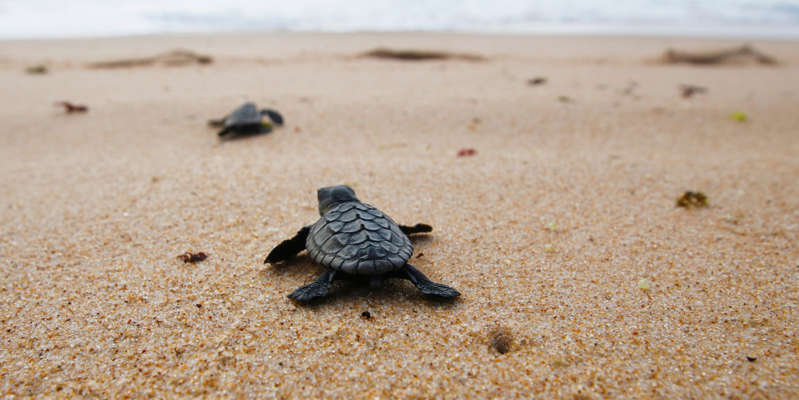
Turtles find themselves in an evolutionary “trap” due to plastic
Young sea turtles are consuming more plastic, scientists said. This could put some species at risk of extinction, according to Frontiers in Marine Science.
The study covered small turtles with shells up to 50 centimeters in diameter. Scientists examined the insides of 121 sea turtles of five different species. The list includes green, loggerhead, olive, hawk beak and flat-back.
Turtles lived in the Indian and Pacific Oceans. They either washed ashore or were caught unintentionally.
The results showed that in representatives of four species, plastic fragments are present in the gastrointestinal tract. The exception was the hawk-beak turtles, but scientists managed to get only seven individuals.
The inhabitants of the Pacific Ocean suffered more. 83% of the green turtle organisms from its waters contained plastic, and from the Indian Ocean only 9%. Plastic debris could account for up to 0.9% of the total weight of the creatures. One green turtle from the Pacific Ocean found 144 pieces of plastic over 1 mm in size. Most of the waste was polyethylene and polypropylene.
Scientists noted that young turtles traditionally swim away from coastal waters into the deep ocean, as there are fewer predators. This evolutionary strategy allowed them to thrive, but now it is a threat. Leaving the coast, the turtles enter the most polluted areas of the ocean, such as the Great Garbage Patch.
Young turtles tend to eat anything and often swallow plastic. Scientists noted that this increases the risk for species that are already threatened with extinction.
Earlier, environmentalists calculated the amount of plastic in the Ganges River. It is considered one of the most polluted in the world.

